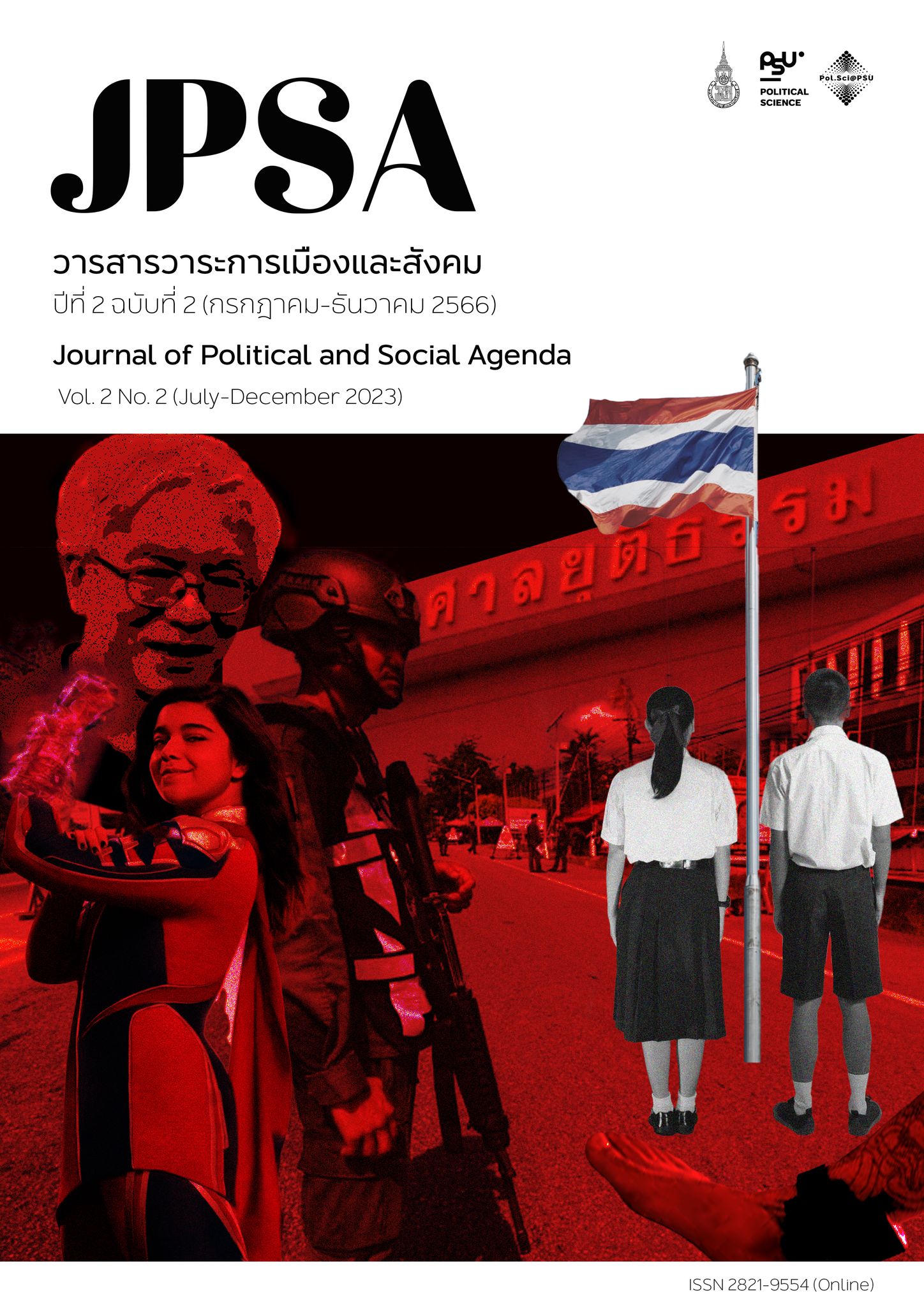การนำอุปกรณ์อิเล็กทรอนิกส์ที่สามารถใช้ตรวจสอบ หรือจำกัดการเดินทางของบุคคลมาใช้ในการปล่อยชั่วคราวของศาลยุติธรรม
Main Article Content
บทคัดย่อ
การศึกษาวิจัยนี้ มีวัตถุประสงค์เพื่อวิเคราะห์การปล่อยชั่วคราวตามพระราชบัญญัติแก้ไขเพิ่มเติมประมวลกฎหมายวิธีพิจารณาความอาญา (ฉบับที่ 30) พ.ศ. 2558 ที่นำอุปกรณ์อิเล็กทรอนิกส์ (EM) มาใช้ในการปล่อยชั่วคราว เพื่อแก้ปัญหาความเหลื่อมล้ำในสังคม ผู้ต้องหาหรือจำเลยหลบหนี ปริมาณผู้ต้องขังล้นคุก และไม่สอดคล้องกับหลักการที่ให้สันนิษฐานไว้ก่อนว่า ผู้ต้องหาหรือจำเลยไม่มีความผิดและก่อนมีคำพิพากษาอันถึงที่สุดแสดงว่าบุคคลใดได้กระทำความผิดจะปฏิบัติต่อบุคคลนั้นเสมือนเป็นผู้กระทำความผิดมิได้ ซึ่งเป็นงานวิจัยเชิงคุณภาพ (Qualitative Research) โดยศึกษาจากเอกสาร และการสัมภาษณ์เชิงลึก เพื่อประกอบการประเมินผลความคุ้มค่าภารกิจภาครัฐ และการปฏิบัติภารกิจของส่วนราชการที่มีประสิทธิภาพ โดยผู้วิจัยมีข้อเสนอ ดังนี้
- การเรียกหลักประกันในการปล่อยชั่วคราวศาลควรใช้ดุลพินิจให้เหมาะสมแก่พฤติการณ์แห่งคดี
- การใช้อุปกรณ์อิเล็กทรอนิกส์ (EM) ในการปล่อยชั่วคราวศาลพึงใช้คดีที่มีอัตราโทษจำคุกอย่างสูงเกินสิบปีขึ้นไปและควรประเมินความเสี่ยง หรือตั้งผู้กำกับดูแลประกอบการพิจารณา ส่วนคดีที่มีอัตราโทษจำคุกอย่างสูงไม่เกินสิบปี ควรพิจารณาใช้อุปกรณ์อิเล็กทรอนิกส์ (EM) ในกรณีที่ผู้ถูกปล่อยชั่วคราวมีพฤติการณ์ที่จะหลบหนี ยุ่งเหยิงกับพยานหลักฐาน หรือไปก่อเหตุอันตรายประการอื่น และศาลควรลดหลักประกันในกรณีที่ให้ปล่อยชั่วคราวโดยมีประกันและหลักประกัน
- ควรมีหน่วยงานกลางกำกับดูแลการใช้อุปกรณ์อิเล็กทรอนิกส์ (EM)
- ควรประชาสัมพันธ์การใช้อุปกรณ์อิเล็กทรอนิกส์ (EM)
- ควรประเมินผลภายหลังจากการใช้อุปกรณ์อิเล็กทรอนิกส์ (EM)
Article Details

อนุญาตภายใต้เงื่อนไข Creative Commons Attribution-NonCommercial-NoDerivatives 4.0 International License.
บทความที่ได้รับการตีพิมพ์ในวารสารออนไลน์เล่มนี้เป็นลิขสิทธิ์ของวารสารวาระการเมืองและสังคม ความคิดเห็นและข้อถกเถียงที่ปรากฏในบทความเป็นความรับผิดชอบของผู้เขียน บรรณาธิการวารสารฯ ไม่มีความเกี่ยวข้องใด ๆ กับความคิดเห็นของผู้เขียนและไม่จำเป็นต้องเห็นด้วยกับความคิดเห็นของผู้เขียน
เอกสารอ้างอิง
ภาษาไทย
จุลสิงห์ วสันตสิงห์. 2553. คำอธิบายประมวลกฎหมายวิธีพิจารณาความอาญา ภาค 1 (มาตรา 1-มาตรา 119) พร้อมตัวอย่างคำถาม-คำตอบ จนถึงปี พ.ศ. 2552 (พิมพ์ครั้งที่ 2).สำนักอบรมศึกษากฎหมายแห่งเนติบัณฑิตยสภา.
ธิดา สิริธรรมานุวงศ์.(2558). การปล่อยชั่วคราวผู้ต้องหาหรือจำเลยโดยใช้การควบคุมด้วยอุปกรณ์อิเล็กทรอนิกส์. (วิทยานิพนธ์นิติศาสตร์มหาบัณฑิต,คณะนิติศาสตร์ มหาวิทยาลัยธรรมศาสตร์).
ปิยะพร ตันณีกุล. (2559). แนวทางพัฒนาการนำระบบการควบคุมตัวอิเล็กทรอนิกส์มาใช้กับผู้กระทำผิดในประเทศไทย. (รายงานวิจัยฉบับสมบูรณ์ มหาวิทยาลัยราชภัฏนครปฐม)
สุมนทิพย์ จิตสว่าง และนัทธี จิตสว่าง. (2556). การคุ้มครองสิทธิผู้ต้องขังระหว่างการพิจารณาคดีของ
ศาลยุติธรรม. (รายงานวิจัยฉบับสมบูรณ์ สถาบันวิจัยรพีพัฒนศักดิ์ สำนักงานศาลยุติธรรม)
สุรินทร์ มากชูชิต. (2555). ระบบการปล่อยชั่วคราวผู้ถูกกล่าวหา : ศึกษาการใช้หลักประกันในคดีอาญา. (วิทยานิพนธ์นิติศาสตร์มหาบัณฑิต คณะนิติศาสตร์ มหาวิทยาลัยธรรมศาสตร์)
ธิดา สิริธรรมานุวงศ์. (2558). การปล่อยชั่วคราวผู้ต้องหาหรือจำเลยโดยใช้การควบคุมด้วยอุปกรณ์อิเล็กทรอนิกส์. (วิทยานิพนธ์นิติศาสตร์มหาบัณฑิต คณะนิติศาสตร์ มหาวิทยาลัยธรรมศาสตร์)
รายงานผลการประเมินความคุ้มค่าโครงการส่งเสริมการนำอุปกรณ์อิเล็กทรอนิกส์สำหรับตรวจสอบหรือจำกัดการเดินทางของบุคคลมาใช้ในการปล่อยชั่วคราว, สำนักงานศาลยุติธรรม
ภาษาอังกฤษ
Bales, W., Mann, K., Blomberg, et al. (2010) A Quantitative ans qualitative assessment of electronic monitoring. Report submitted to the office of justice program. USA: National Institute of Justice U.S. Departrment of Justice.
Bonta,J., Rooney,J., & Wallace-Capretta, S. 1999. Electronic Monitoring in Canada.Ottawa :Public And Government Services Canada.
John Howard. 2006. Electronic Monitoring John Howard Society of Alberta 2000. [Online].Available: www.johnhoward.ab.ca/PUB/A3.htm (30 December 2012).
Martinovic, M. (2002) The punitiveness of electronically monitored community based programs. Paper presented at the Probatinon and Community Corrections Officers’ Association Inc. Conference, Perth, Australia


